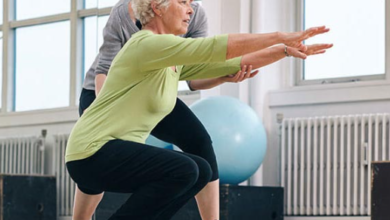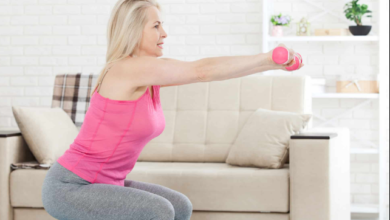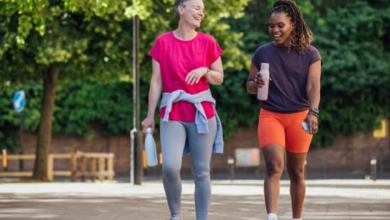Finding Stability: A Comprehensive Guide to Balance Exercises for Seniors
Introduction:
Balance is a foundational element of functional independence, especially for seniors seeking to maintain a vibrant and active lifestyle. As we age, factors such as decreased muscle mass, changes in sensory perception, and medical conditions can contribute to challenges in balance. In this comprehensive guide, we explore a diverse range of balance exercises tailored specifically for seniors. These exercises aim not only to enhance stability but also to foster confidence and reduce the risk of falls. By incorporating these tips and exercises into daily routines, seniors can proactively address balance issues, paving the way for a more secure and fulfilling journey through their golden years.
Understanding the Importance of Balance for Seniors
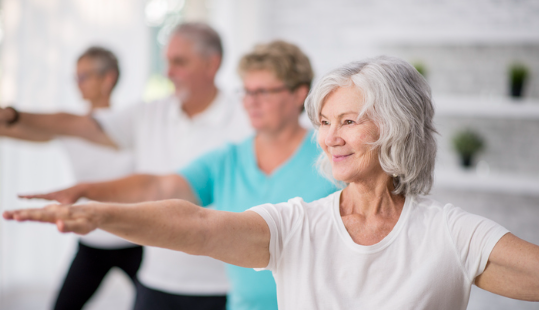
Before delving into specific exercises, it’s crucial to understand why balance is so vital for seniors. Beyond preventing falls, a well-maintained sense of balance contributes to improved posture, coordination, and overall mobility. As seniors actively engage in balance exercises, they promote not only physical stability but also mental well-being, boosting confidence and a sense of control over their bodies.
Simple Balance Exercises for Everyday Life
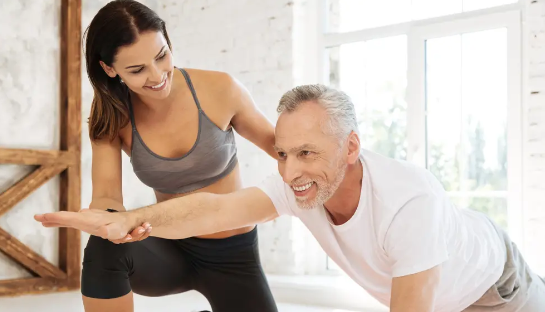
Tandem Walking: Seniors can practice walking in a straight line, placing one foot directly in front of the other, heel to toe. This simple exercise enhances balance and can be done in the comfort of their homes.
Heel-to-Toe Stand: This involves standing with the heel of one foot touching the toes of the other foot. Seniors can hold onto a sturdy surface for support initially, gradually transitioning to independent standing as their balance improves.
Single-Leg Stance: While holding onto a countertop or chair for support, seniors can lift one leg off the ground, maintaining balance on the other. This exercise strengthens core muscles and improves overall stability.
Sit-to-Stand Exercises: Rising from a seated position challenges balance and leg strength. Seniors can practice sitting and standing from a sturdy chair, gradually increasing the number of repetitions.
Advanced Balance Exercises for Progressive Improvement
Standing Leg Swings: Holding onto a support, seniors can swing one leg forward and backward, then side to side. This dynamic movement enhances flexibility and challenges balance control.
Weight Shifts: While standing with feet shoulder-width apart, seniors can shift their weight from one foot to the other. This exercise mimics real-life movements and improves weight distribution.
Clock Reaches: Imagining a clock face on the floor, seniors can reach their foot forward to touch each hour marker. This exercise promotes multidirectional stability and flexibility.
Balancing on One Leg with Eyes Closed: Closing the eyes during a single-leg stance adds an extra challenge, as it relies more on proprioception and internal balance cues. This exercise is beneficial for overall balance refinement.
Incorporating Balance Exercises into Daily Life
Integrate Exercises into Routine Activities: Seniors can seamlessly incorporate balance exercises into daily tasks, such as standing on one leg while brushing their teeth or doing heel raises while waiting for the kettle to boil.
Use Supportive Equipment: Having a sturdy chair or countertop nearby for support can instill confidence as seniors gradually progress through balance exercises. Safety should always be a top priority.
Consistency is Key: Regular, consistent practice is crucial for seeing improvements in balance. Seniors should aim to include balance exercises in their routine at least a few times a week
Tips for Safe and Effective Balance Training
Consult with Healthcare Professionals: Before starting any new exercise regimen, seniors should consult with their healthcare providers, especially if they have pre-existing medical conditions or concerns about their physical capabilities.
Start Slowly and Progress Gradually: It’s essential for seniors to start with simple balance exercises and progress at their own pace. As they gain confidence and strength, they can gradually incorporate more challenging movements.
Ensure a Stable Environment: Performing balance exercises in a safe and clutter-free environment is crucial. Seniors should remove any potential tripping hazards and choose a space with good lighting.
Wear Appropriate Footwear: Comfortable and supportive footwear plays a significant role in balance. Seniors should choose shoes with non-slip soles and proper arch support.
Group Activities for Social Engagement and Balance Improvement
Yoga Classes: Many community centers offer senior-friendly yoga classes, incorporating poses that enhance balance, flexibility, and mindfulness.
Tai Chi Sessions: Tai Chi is a gentle and flowing martial art that focuses on controlled movements. Joining a Tai Chi class can be an enjoyable way for seniors to improve balance while socializing.
Water Aerobics: Aquatic exercises provide buoyancy, making them low-impact and ideal for seniors. Water aerobics classes often include balance-enhancing activities.
Top 8 Exercises for Muffin Top Meltdown
Walking Clubs: Forming or joining a walking club encourages regular physical activity, and walking itself is an excellent way to promote balance and cardiovascular health.
The Role of Nutrition in Supporting Balance
Nutrition plays a vital role in supporting overall health, including balance. Seniors should ensure they are consuming a well-balanced diet rich in nutrients like calcium, vitamin D, and magnesium, which contribute to bone health and muscle function. Staying hydrated is equally important, as dehydration can affect cognitive function and balance.
Conclusion: Embracing a Balanced Future
In prioritizing balance exercises, seniors embark on a journey to fortify their physical well-being and enhance their quality of life. These exercises, ranging from simple movements to more advanced challenges, cater to diverse abilities and aspirations. By integrating these exercises into daily life and seeking social engagement through group activities, seniors not only improve their physical stability but also foster a sense of community and purpose. As the principles of safety, consistency, and gradual progression guide their journey, seniors can confidently embrace a balanced future filled with vitality, resilience, and the joy of continued independence.



